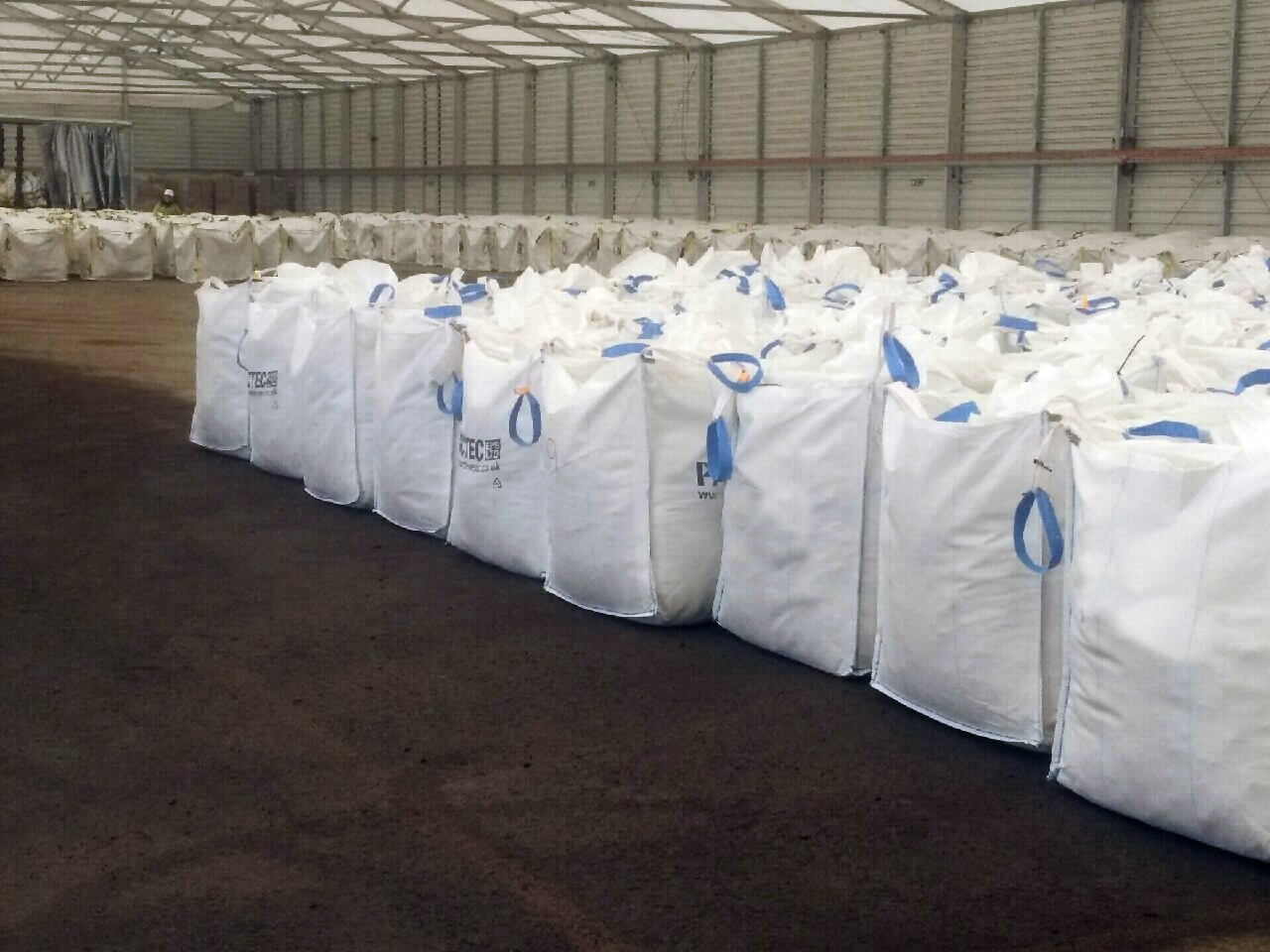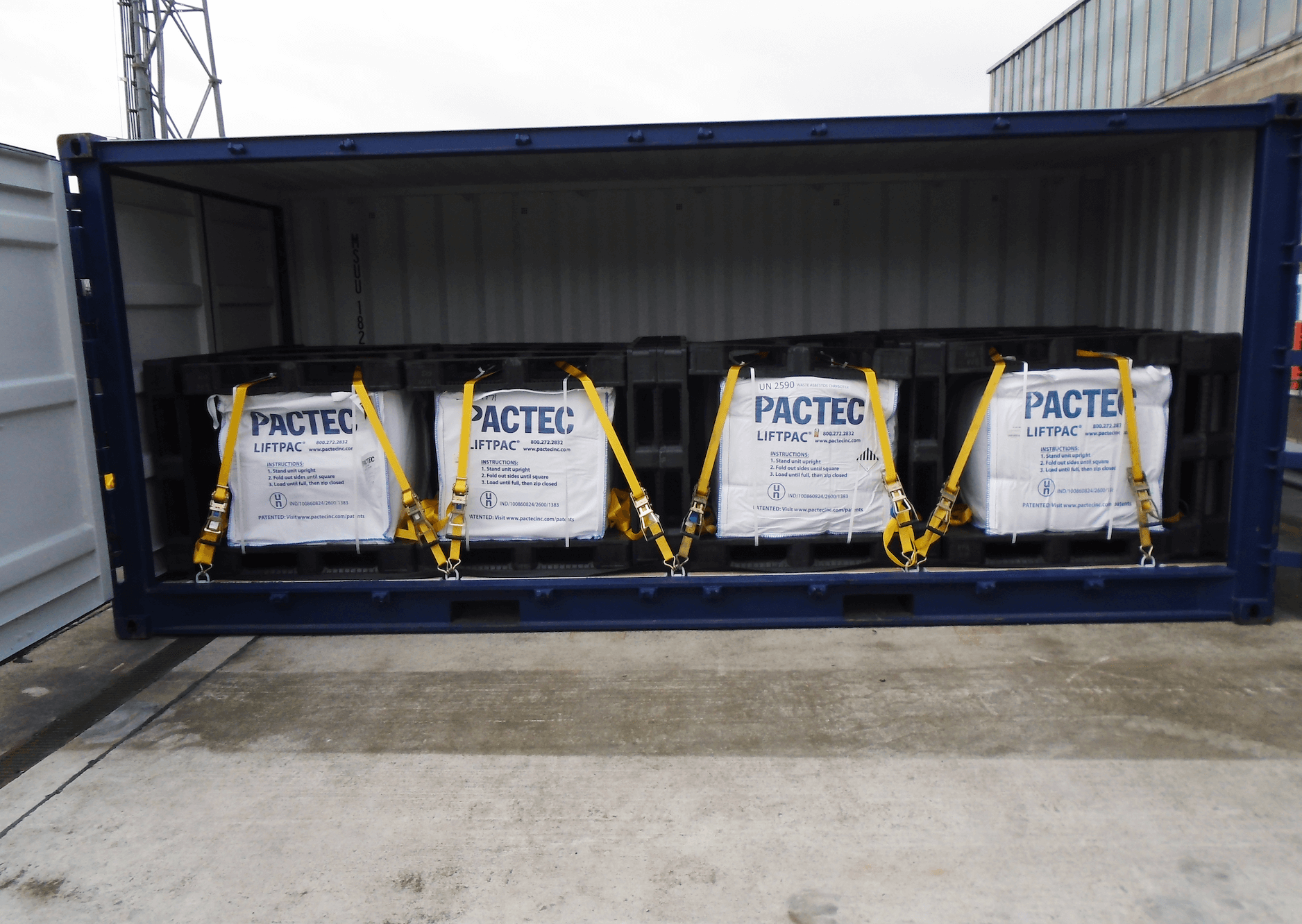Depending on the industry you are in, you may have encountered the term FIBC bags at some point. You might even be wondering “what does FIBC stand for?” and “why would I want to use an FIBC?” Whether you are the CEO of a manufacturing plant, a transportation specialist or a field worker, it’s important to learn as much as you can about FIBC bags and their importance to operational efficiency and safety.
What Does FIBC Stand For?
FIBC stands for Flexible Intermediate Bulk Container. This is a term used for bulk packaging bags that are typically made from polypropylene fibers that are strong yet pliant. These fibers form a sturdy and flexible container that can hold up to 5,000 pounds of materials, ranging from demolition debris and food products to pharmaceuticals and hazardous waste.
Since the 1970s, FIBC bags have been widely used across a number of industries, particularly in manufacturing and construction. Considering the volume of materials they can hold, bulk bags are usually transported using forklifts and cranes.
Read our latest blog post about flexible intermediate bulk container bags to learn more.
Two Main Reasons You Should Use an FIBC Bag
Now that we’ve answered the question “What does FIBC stand for?,” let’s talk about why you need FIBC bags in the first place. For that, let’s take a look at the top FIBC bag uses across all industries:
1. Transportation
When you are transporting materials such as powdered substances or flowable solids of significant weight and/or volume, breaking the load down into more manageable packaging is beneficial. And since FIBCs weigh much less than boxes and drums, they allow you to transport more material and stay within DOT regulations. Plus, many FIBCs are specially made for your contents (breathable fabrics, additional leak liner, etc.), they can offer additional protection to preserve the contents, especially consumables like grain or feed. Moreover, FIBC bags are easy to move from one point to another using lifting and transporting equipment.
2. Storing Flowable Materials
Flowable materials are dry and granulated products that are transported in large quantities. These include materials such as sand, gravel, plastic granules, food items, animal feed, and powdered products. To secure and protect these materials from the risk of spillage and contamination, FIBC bags are seen as ideal containers due to their toughness and flexibility. These bags also come with specific filling and discharge mechanisms which make material handling less tedious. Due to their shape, they can be stacked on top of each other. This allows you to maximize available space so you can accommodate more materials for storage.
When you are in an industry where there is always a risk of spilling valuable and toxic materials, FIBC bags are definitely worth the investment. It’s only a matter of choosing the right types of FIBC bags to use in your sector.

Additional Terms Used When Ordering an FIBC
Before you order an FIBC bag, you will need to choose the right kind of bag for your line of business. Not all bags are equal, and few can satisfy the needs of your job site. Consider these terms as you look around for bulk container manufacturers that specialize in this type of packaging.
Terms for the Different Shapes of an FIBC
Choosing a shape for an FIBC bag seems unimportant, but it’s actually critical if your goal is to save time, cut transport costs, and secure valuable materials. For that, let’s take a look at the four most common shapes to pick when you are shopping for FIBC bags.
- Circular / Tubular
- For fine and hygroscopic materials, circular or tubular bags are recommended. They are constructed by weaving a single polypropylene fabric from end to end. A bottom base is then attached to the bottom. The absence of side seams provides high vertical pressure. These types of FIBC bags are also easy to lift using a crane or forklift.
- 4 Panel
- FIBC bags with a four-paneled construction provide more rigid support for handling bulk materials. The bags are weaved together from edge to edge. This allows the bags to retain their square shape even when filled. As a result, this makes it easier to stack the bags for a more compact storage.
- U Panel
- These types of bags are made using three fabrics. The first has a longer length. When folded into a U-shape, it forms the base and the first two sides of the bag. Two additional panels are then weaved to form the remaining sides. Like four-panel bags, u-panel bags also retain their shape and provide greater durability.
- Baffle
- For more stable handling, baffle bags are usually sought. They have a square-shaped construction and offer greater durability due to the baffles that are sewn in each corner.
Terms for the Fabric Electrostatic Classification of an FIBC
During the process of filling or discharging, FIBC bags can cause a build of static electricity due to the interaction among the granulated materials. This can become a hazard if you are dealing directly with combustible materials. When picking a container bag, determine the right fabric electrostatic classification based on the materials you are handling.
- Type A: Used for non-flammable materials and, hence, lacks static electricity protection; NOT used for transporting flammable materials.
- Type B: Provides insulation and is used for transporting dry flammable powders; NOT used for transporting flammable materials.
- Type C: Needs to be grounded during filling or discharging; NOT to be used when the ground connection is damaged or unattached.
- Type D: Made from anti-static material; does not require grounding during fling or discharging; NOT to be used when wet by water or other liquids.

Other Bulk Container Bag Options
Apart from FIBC bags, there are also other bulk containers you can use for specific applications. At PacTec, Inc., we provide the following packaging solutions as well:
Used for storing hazardous materials such as contaminated PPEs and waste products, our LiftPac® bags are designed to provide excellent leak protection and can hold the same volume as four 55-gallon drums.
Highly versatile and easy to deploy, these bags can help secure and transport leaking transformers to service centers.
To ensure high levels of corrosion resistance, our SecurePac containment system can protect valuable assets thanks to its gas-tight reusable enclosure that prevents rusting caused by environmental factors.
Our IP-1 LiftPac® IP-1 designs offer maximum flexibility for handling materials with irregular shapes. These solutions are ideal for packaging rubble, demolition debris, and soil.
As an alternative to metal and wooden boxes, our line of IP-2 LiftPac® packages can contain loads of up to 242 cubic feet and 22,000 lbs. They are also ideal for the disposal of radioactive waste.
Also suitable for sand, gravel, and demolition debris, our 7A Type A IP-3 LiftPac® LLW flexible containment package is also a preferred option for LSA-III Low-Level Waste. It also meets 49 CFR regulations for handling radioactive waste.
Learn more about our waste containment solutions and find the packaging that suits your needs.
In Conclusion
When it comes to ensuring that all your goods are safe, it matters a lot to opt for the right packaging material. FIBC bags are not just for easy transportation and storage. They are also crucial to protecting your investments, reducing downtimes, cutting transport costs, and ensuring a safer job site.




